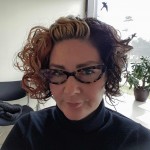If only…
Creating quality content is hard in higher education. Sometimes, harder than it should be.
That’s why I asked the 12 Higher Ed Professionals of the 2016 Higher Ed Content Conference to share with us their biggest hurdle to quality content.
Read the 12 big hurdles to quality content your higher ed colleagues have identified at their school and find out how they’ve tried to mitigate them.
The “we’ve always done it this way†syndrome for Cameron Pegg, Executive Adviser for Engagement – Griffith University (Australia)
 The biggest hurdles are age old: time and money!
The biggest hurdles are age old: time and money!
The thing is, universities spend an inordinate amount of time (and money) producing the same kinds of content (without critical reflection), and some of these resources would be better spent trialling new ways of working and communicating.
In the digital space, particularly, we do have to provide proofs of concept. When leaders see the results these assets achieve (likes, shares, views, donations, whatever), it makes it easier to pitch and create more of said content in the future.
Internal mindset and silos for Zoe Barker, Web Administrator – DePaul University
 One of the biggest hurdles for us is the internal-mindset of the site editors in the colleges and offices. They tend to create content from an internal perspective — sometimes using jargon that people outside of our university wouldn’t understand. They have a hard time seeing things from the view of a prospective student or someone who has never been in higher ed.
One of the biggest hurdles for us is the internal-mindset of the site editors in the colleges and offices. They tend to create content from an internal perspective — sometimes using jargon that people outside of our university wouldn’t understand. They have a hard time seeing things from the view of a prospective student or someone who has never been in higher ed.
We deal with it by knowledge-sharing. We’re conducting workshops for the editors where we explain how to avoid acronyms and what to call pages and subsites so that they’re easy to find for an outside visitor. Using terms that are more general and using sensical labeling are two big things we’re promoting right now to get the editors to see outside themselves.
Having departments and schools that are siloed is a big issue in general.
If a department or school/college isn’t looking outside of their area on their website it creates duplicate content problems. Again, knowledge-sharing is our greatest tool to deal with these issues.
Writers’ love for their words for Sofia Tokar, Web Writer – University of Rochester
 I say this with love in my heart (and as an English major myself), but my biggest hurdle is other writers, particularly those from academic disciplines or centers related to writing, communication, or languages. Because of their experience and expertise, these folks seem especially intransigent when it comes to rewriting or editing their website content for users. Unfortunately, the writing tactics that lead to success in academia or research can misfire on the web.
I say this with love in my heart (and as an English major myself), but my biggest hurdle is other writers, particularly those from academic disciplines or centers related to writing, communication, or languages. Because of their experience and expertise, these folks seem especially intransigent when it comes to rewriting or editing their website content for users. Unfortunately, the writing tactics that lead to success in academia or research can misfire on the web.
One way to deal with this hurdle is by talking—face-to-face, in person, preferably with coffee in the vicinity. From the talking (eventually) comes the understanding.
The understanding of what, you ask?
That web content is less about what we need to say than about what our users need to hear (hat tip to Professor Michael D.C. Drout for effectively teaching that lesson in his audiobook A Way with Words: Writing, Rhetoric, and the Art of Persuasion).
Brand/voice/accuracy alignment for Joshua Dodson, Director of SEO – Southern New Hampshire University
 It is important that content is on brand, on voice, and accurate. It also needs to have a natural flow.
It is important that content is on brand, on voice, and accurate. It also needs to have a natural flow.
To make sure that all of this criteria is met, we have to have multiple rounds of reviews, revisions, and fact-checking for each piece of content. We rely on the processes that we have in place to make sure that all of the right people see the content before it goes out.
The real-time race for Kelly Bennett, Manager of Social Media and Marketing Strategy – Miami University
 The biggest hurdle for content at work is balancing high quality content with real time content.
The biggest hurdle for content at work is balancing high quality content with real time content.
For instance, we have fantastic photographers that cover events. Often I will see a photo of an event taken by a student on social media as the event is happening. Do I wait for the photographers to get back to the office and upload photos to our server before sharing, or do I use the student’s lower quality photo that is in real-time?
Something we’ve been doing to solve this dilemma is having our photographers take a photo with their phone and send to me directly, so I can post in a timely fashion on Twitter and Instagram and post the high-quality photos in a recap album on Facebook.
Limited time to plan for Amy Grace Wells, Content Strategist – University of South Carolina
 Content is everywhere and, in most cases, it’s not difficult to sort the good from the bad. I know we see a lot of bad content, but I also believe that good communication pros can easily create basic quality content.
Content is everywhere and, in most cases, it’s not difficult to sort the good from the bad. I know we see a lot of bad content, but I also believe that good communication pros can easily create basic quality content.
The biggest hurdle, and what sets good content apart from great content, is taking the time for intention.
Quality content takes planning, planning takes intention, and intention takes time. Time is a resource so few of us have. This is where content strategy comes in by helping to set that intention with a structure and culture that make it easy to decide on great content quickly.
Allocation of time for Steve Roulier, Executive Director of Communications – Springfield College
 Unfortunately, our biggest hurdle is providing enough resources, especially considering a majority of internal clients and departments still see our communications office as a service agency.
Unfortunately, our biggest hurdle is providing enough resources, especially considering a majority of internal clients and departments still see our communications office as a service agency.
They want a brochure and they want it completed their own way, and by tomorrow. Digital communications and social media are sometimes not even on their radar. Nor is the need for a content marketing strategy.
Quality is compromised as considerable time is spent educating each client. Additional resources are needed to continue to develop a preemptive coaching and consultation strategy to our clients so that they may gain a deeper understanding of today’s marketing communications.
Lack of resources for Ravi Jain, Senior Associate Director, Digital Media and Web Development – Boston College
 The biggest consistent hurdle for me is that we do not have a dedicated videographer or video producer in my group.
The biggest consistent hurdle for me is that we do not have a dedicated videographer or video producer in my group.
We’ve been utilizing freelance help to better leverage my own and my colleagues’ strength of storytelling, concept development and project management.
Lack of time and resources for Avalee Harlton, Service Coordinator & Web Content Designer/Editor – York University (Canada)
 I’m sure we’re not alone on this one — there’s never enough time or resources!
I’m sure we’re not alone on this one — there’s never enough time or resources!
Currently we have a distributed content creation model in-place across campus where individual units are creating the content for their web areas. We also try to remind groups to limit the amount of content to that which they can expect to manage reasonably.
Content sources availability for Steve Thompson, Head of Digital – University of Sheffield (UK)
 This may depend on how you define ‘quality’.
This may depend on how you define ‘quality’.
I’m actually ok with content not being too polished – I think it can provide a level of authenticity. Content creators, also need the freedom to feel like they can put out content that’s not ‘perfect’ or experimental.
Otherwise, the biggest hurdle is access to and buy-in from the people around the University. Academics, staff and students have so many demands on them and they all have different views as to what makes great content.
Both these points boil often down to people’s perception. So, to deal with this, it’s a case of getting out there and speaking to people, providing them examples or work and building strong relationships. They then go out and evangelise to others…at least I hope they do ;)
Lack of training for Donna Lehmann, Senior Director of Marketing and Communications – Fordham University
 Our biggest hurdle is the decentralized model of content development we encourage with the use of a CMS.
Our biggest hurdle is the decentralized model of content development we encourage with the use of a CMS.
It’s unrealistic to expect that we’re going to turn all of our CMS users into ace web writers and SEO mavens.
We’re finding ways to offer professional assistance through third-party tools and freelance writers. It’s a worthy investment.
Scaling for Mike Petroff, Associate Director of Digital Content Strategy – Harvard University
 A big hurdle is scale.
A big hurdle is scale.
There are so many interesting stories at Harvard to tell, but like any other institution, resources are limited. We’ve used a model of aggregation and amplification to showcase content from within Harvard’s Schools and centers. We’ve also distributed our editorial content calendar to crowdsource ideas for future stories and opportunities.
Quality is incredibly important to us and we look to ensure continuous improvement, whether that be for our web properties, social accounts, or content optimization methods.
So, what’s the biggest hurdle to quality content at your school?
Tell us by posting a comment below!
And, if you want to learn more from these higher ed content professionals, make sure to register your team for the 2016 Higher Ed Content Conference (now available on-demand).






[New Post] 12 Big Hurdles to Quality Content in #HigherEd https://t.co/V4qiHjcDKE
College Web Editor – 12 Big Hurdles to Quality Content in #HigherEd: If only… Creating quality content is hard… https://t.co/1U7bBpnYah
New post: College Web Editor – 12 Big Hurdles to Quality Content in #HigherEd https://t.co/4YBZiKsaAt
College Web Editor – 12 Big Hurdles to Quality Content in #HigherEd https://t.co/DzSlG7yxpH
RT @karinejoly: Why is it so difficult to create quality content in #highered? https://t.co/5TofGXZrZk #hesm #confabedu https://t.co/4juPxR…
RT @karinejoly: Why is it so difficult to create quality content in #highered? https://t.co/5TofGXZrZk #hesm #confabedu https://t.co/4juPxR…
Why is it so difficult to create quality content in #highered? https://t.co/a2Qk41xZrU #hesm #confabedu https://t.co/OwTgdX7hTO
“web content is less about what we need to say than about what our users need to hear.” #highered #truth https://t.co/jBzfiDbBqA
CollegeWeb: 12 Big Hurdles to Quality Content in #HigherEd https://t.co/2knAvdYvXC #Content_Strategy #HigherEd
12 Big Hurdles to Quality Content in #HigherEd https://t.co/Jhu4w0MJXp
RT @higheredexperts: Why is it so difficult to create quality content in #highered? https://t.co/a2Qk41xZrU #hesm #confabedu https://t.co/O…
I can relate to most of these hurdles to quality web content in #highered. https://t.co/fGDEaD2tXi
Yes, If only. https://t.co/3A7Sh8x7oG
12 Big Hurdles to Quality Content in #HigherEd https://t.co/X7iFPAeQSE
RT @thomascmurray: 12 Big Hurdles to Quality Content in #HigherEd https://t.co/X7iFPAeQSE
12 Big Hurdles to Quality Content in #HigherEd https://t.co/jk72quEuc7
RT @moffittk: 12 Big Hurdles to Quality Content in #HigherEd https://t.co/jk72quEuc7
12 #highered experts talk about the creation of quality content, via @collegewebed https://t.co/bBBLJYlY8A
RT @eduwebconf: Interesting. What do you think? |
12 Big Hurdles to Quality Content in #HigherEd https://t.co/bYrvXxzdNJ
RT @higheredexperts: Why is it so difficult to create quality content in #highered? https://t.co/a2Qk41xZrU #hesm #confabedu https://t.co/O…
My colleagues and I address 12 big hurdles to quality content here: https://t.co/aMNP6fO5O9 @karinejoly #heco16
RT @higheredexperts: Why is it so difficult to create quality content in #highered? https://t.co/a2Qk41xZrU #hesm #confabedu https://t.co/O…
RT @SteveRoulier: My colleagues and I address 12 big hurdles to quality content here: https://t.co/aMNP6fO5O9 @karinejoly #heco16
RT @lrius: 12 #highered experts talk about the creation of quality content, via @collegewebed https://t.co/bBBLJYlY8A
RT @lrius: 12 #highered experts talk about the creation of quality content, via @collegewebed https://t.co/bBBLJYlY8A
Why is it so difficult to create quality content in #highered? https://t.co/Kq7MZu4fgJ #eduweb16 #heweb16 https://t.co/HEX0TG7XpQ
Do you face the same challenges? 12 Big Hurdles to Quality Content in #HigherEd https://t.co/oOM8yY15Nb https://t.co/j937b61jyH